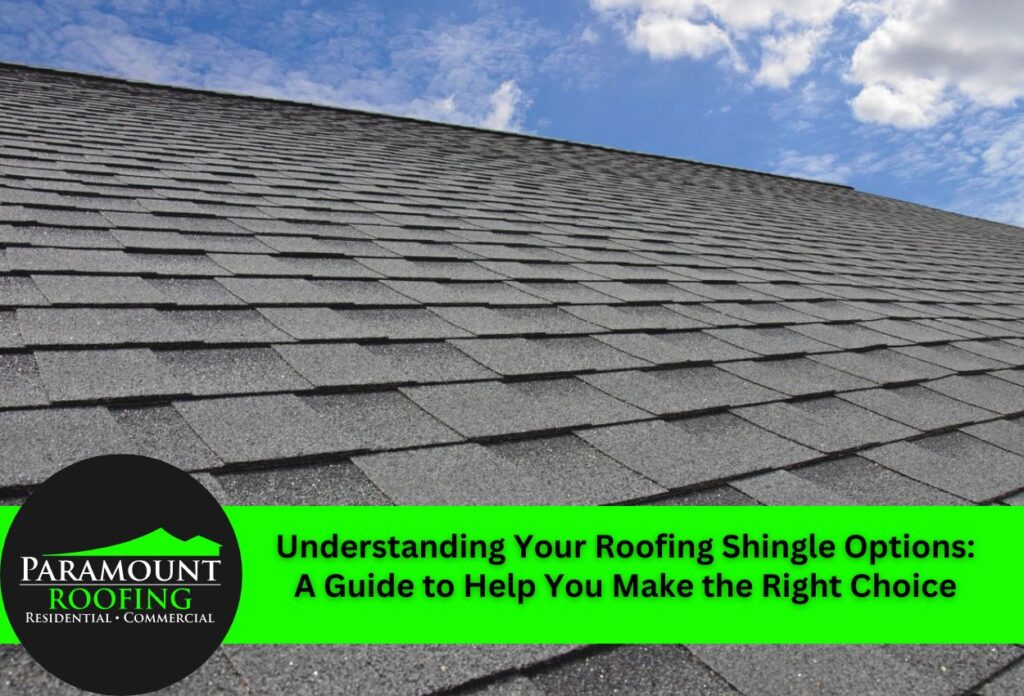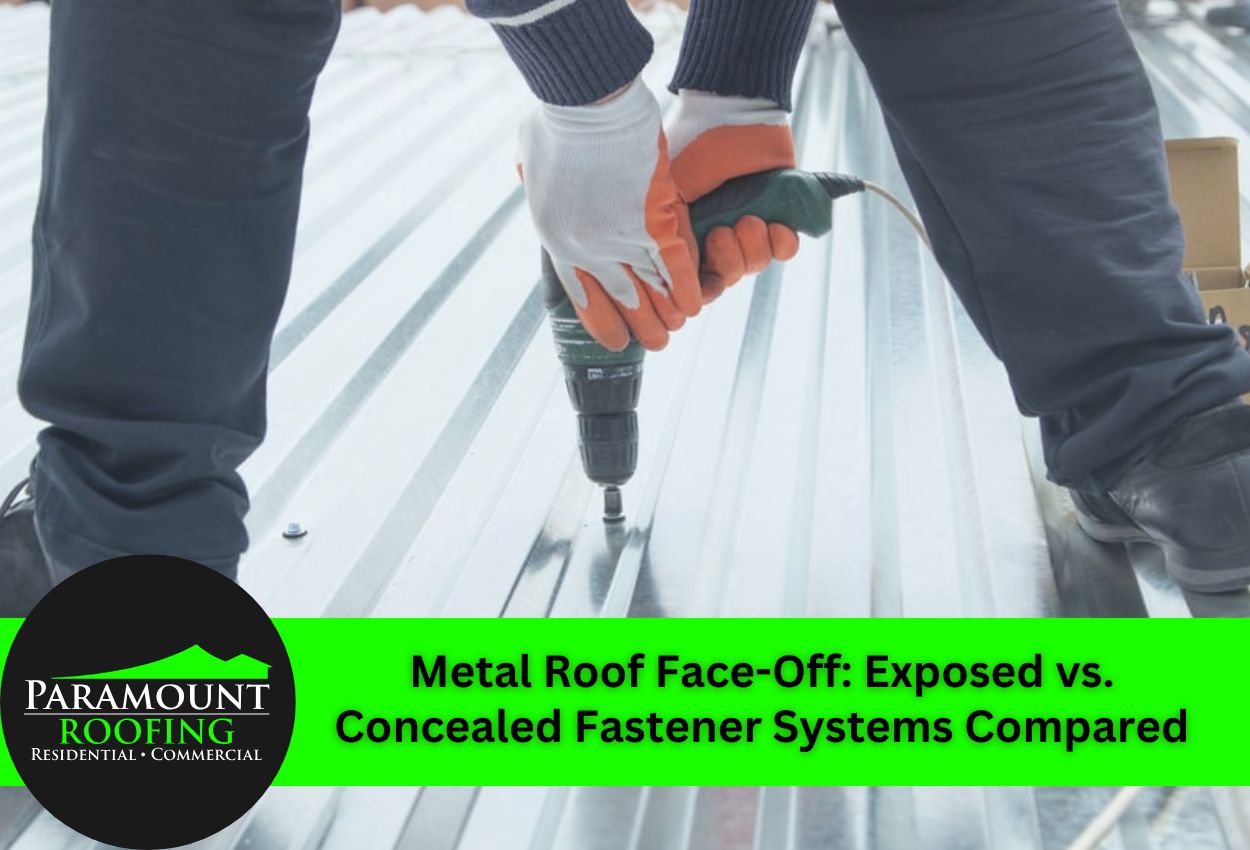Understanding Your Roofing Shingle Options: A Guide to Help You Make the Right Choice

Choosing between 3-tab and architectural shingles can be one of the most important decisions homeowners face during roof replacement or new construction projects. These 2 dominant asphalt shingle types differ significantly in construction, appearance, and performance characteristics, making the selection process more complex than many initially realize.
3-Tab shingles feature a flat, uniform appearance with cutouts that create 3 distinct tabs per shingle strip. Architectural shingles, also known as dimensional shingles, utilize multiple layers and varied cuts to produce a textured, dimensional look that mimics premium roofing materials like wood shake or slate.
The fundamental differences between these roofing material options extend beyond appearance. Architectural shingles typically offer enhanced durability, longer warranty periods, and superior wind resistance compared to their standard shingle counterparts. However, 3-tab shingles maintain popularity due to their streamlined profile and straightforward installation process.
Understanding these asphalt shingle types becomes essential when evaluating residential roofing options. The choice between architectural shingles and 3-tab shingles impacts not only immediate installation considerations but also long-term home protection, maintenance requirements, and property value. Each option has its own distinct advantages depending on specific project requirements, climate conditions, and homeowner priorities regarding performance and appearance.
Construction and Design Differences That Matter
The manufacturing process creates fundamental distinctions between these asphalt shingle types that directly impact their appearance and performance. 3-Tab shingles utilize a single-layer design with a fiberglass mat base coated in asphalt and mineral granules. The uniform cutout pattern creates precise slots that form 3 rectangular tabs, resulting in a flat, linear appearance across the roof surface.
This standard shingle construction produces consistent shadow lines and a streamlined profile that many homeowners appreciate for its clean, traditional look. The single-layer design also makes 3-tab shingles lighter in weight, which can benefit certain roof structures with load limitations.
Architectural shingles employ a completely different construction approach through laminated asphalt layers. Multiple layers of material are bonded together during manufacturing, with the top layer cut in random patterns while the bottom layer remains intact. This multi-layered construction creates dimensional depth and texture that mimics premium roofing materials.
The lamination process produces varied shadow lines and visual depth that standard shingles cannot achieve. These dimensional shingles feature irregular cutout patterns and staggered edges that eliminate the uniform characteristic of 3-tab designs. The additional material layers contribute to increased thickness and weight, which enhances its durability, but requires consideration during roofing material comparison evaluations. This construction difference significantly influences both aesthetic appeal and long-term performance characteristics between these residential roofing options.
Curb Appeal: How These Shingles Impact Your Home’s Look
The difference in appearance between these asphalt shingle types creates dramatically different visual outcomes for residential properties. Standard shingles deliver a clean, uniform appearance that complements traditional home architectural styles through their streamlined profile. The consistent 3-tab pattern creates orderly horizontal lines across the roof surface, producing a neat and symmetrical look that many homeowners find appealing for ranch-style homes, colonials, and other classic designs.
This uniform appearance works particularly well on homes where simplicity and clean lines are architectural priorities. The flat profile of 3-tab shingles creates subtle shadow lines that maintain visual consistency without overwhelming other design elements of the home’s exterior.
The layered construction of dimensional shingles and 3-tab shingles creates natural-looking variations that break up the flat appearance typical of traditional roofing materials. This enhanced visual depth works especially well on homes with complex rooflines or architectural details that benefit from the added texture. The comparison between these roofing material options often centers on this visual impact, as the dimensional appearance can complement both traditional and contemporary home styles while providing the authentic look of premium materials without the associated maintenance requirements.
Weather Resistance and Long-Term Performance
Wind resistance capabilities reveal significant performance differences when comparing these asphalt shingle types under challenging weather conditions. Architectural shingles typically offer superior wind resistance ratings, often withstanding wind speeds up to 130 mph compared to the 60 to 70 mph ratings common with standard shingles. The multi-layer construction and increased weight of dimensional shingles create better adhesion to the roof’s decking and enhanced resistance to wind uplift forces.
The laminated design of architectural shingles provides multiple bonding points that distribute wind more effectively across the shingle surface. This construction advantage becomes particularly important during severe weather events when sustained winds and gusts can compromise the material’s structural integrity. 3-Tab shingles, while adequate for normal weather conditions, present larger surface areas that can catch wind due to their flat profile and cutout design.
Lifespan expectations differ substantially between these residential roofing options. Architectural shingles typically maintain their protective qualities for about 25 to 30 years, while 3-tab shingles generally require replacement after about 15 to 20 years. The additional material thickness in dimensional shingles and 3-tab shingles provides better protection against UV degradation, thermal cycling, and granule loss over time.
Architectural shingles demonstrate better resistance to algae growth, impact damage, and thermal expansion stresses that commonly affect roofing materials. This enhanced durability often translates to fewer repairs and maintenance issues throughout the roof’s service life, making the roofing material comparison favor dimensional options for long-term performance considerations.
Installation Requirements and Professional Considerations
The installation complexity between these asphalt shingle types creates notable differences in labor requirements and project timelines. 3-Tab shingles offer straightforward installation procedures due to their uniform design and consistent placement patterns. The flat profile and predetermined cutout locations simplify alignment processes, allowing experienced roofers to maintain steady installation progress across the roof surface.
Standard shingles require fewer cuts and adjustments during installation, as their uniform dimensions create predictable overlap patterns. The lighter weight of 3-tab materials also reduces physical demands on installation crews and places less stress on roofing structures during the installation process.
Architectural shingles need more careful attention to detail during installation to achieve proper appearance and performance. The varied cutout patterns and random design elements require roofers to pay closer attention to shingle placement and orientation. Architectural shingles and standard shingles require different installation techniques to ensure proper alignment and maintain the intended curb appeal.
Both shingle types perform adequately on standard roof slopes, but architectural shingles often provide better performance on lower-pitch roofs due to their enhanced sealing capabilities. The additional thickness and weight of dimensional shingles may require structural evaluation on older homes or buildings with load limitations. Ventilation requirements remain consistent regardless of the chosen shingle type, though the increased thickness of architectural options may influence flashing details and trim work around roof gaps and edges.
Warranty Coverage and Manufacturer Protection
Standard warranty terms for 3-tab shingles typically provide basic coverage ranging from 20 to 25 years, with most manufacturers offering limited material defect protection. These warranties generally cover manufacturing defects, premature granule loss, and structural integrity issues under normal weather conditions. However, coverage for standard shingles often includes prorated terms that reduce replacement value over time, meaning homeowners bear increasing financial responsibility as the roof ages.
Basic warranty protection for 3-tab installations usually excludes damage from severe weather, improper installation, or normal wear patterns. Most manufacturers require professional installation and specific ventilation requirements to maintain warranty validity. The straightforward nature of these asphalt shingle types means warranty claims typically involve clear-cut manufacturing defects rather than performance-related issues.
Enhanced warranty options accompany architectural shingles, with many manufacturers offering 30-year to lifetime limited warranties on these products. These extended coverage periods reflect the superior construction and expected longevity of architectural materials. Premium manufacturers often include additional protections such as algae resistance guarantees, enhanced wind resistance coverage, and non-prorated replacement periods that maintain full coverage value for extended timeframes.
Many architectural shingle warranties include transferable terms that maintain coverage when properties change ownership, adding value during home sales. Some manufacturers provide comprehensive system warranties that cover the components of a roofing system, offering homeowners more complete protection for their residential roofing investment.
Making the Final Decision for Your Roofing Project
Evaluating your home’s specific requirements forms the foundation for choosing between these types of shingles effectively. Climate conditions play an important role in determining which residential roofing options will perform best for your property. Homes in areas with frequent severe weather benefit from the enhanced wind resistance and durability that architectural shingles provide, while properties in moderate climates may find 3-tab shingles adequate for their protection needs.
The architectural style of your home also influences which shingle type will complement its overall design. Traditional Colonial and ranch-style homes often work well with the clean lines of standard shingles, while contemporary and complex rooflines benefit from the dimensional depth that architectural options provide. The roofing material should also align with existing exterior elements, including siding materials, trim colors, and landscape features.
Budget considerations require balancing initial investment against long-term value when evaluating architectural shingles and 3-tab shingles. Property value goals, planned ownership duration, and maintenance preferences can all influence which option delivers better overall investment returns. Homes intended for resale within 10 years may prioritize different factors compared to long-term family residences.
Essential questions for roofing contractors should address installation experience with your chosen shingle type, local building code requirements, and specific performance expectations for your area’s weather patterns. Contractors should explain ventilation requirements, underlayment recommendations, and maintenance schedules for both options. Request detailed comparisons of warranty terms, expected lifespan, and potential repair costs to make informed decisions about these roofing options that will protect your home effectively.
Choose the Best Shingles with Paramount Roofing
Deciding between 3-tab and architectural shingles is important for your home’s curb appeal and durability. Each type offers unique benefits, and understanding these can significantly impact your home’s protection and resale value. Whether you prioritize budget-friendly options or long-term resilience and visual appeal, Paramount Roofing is here to guide you through your choices.
Architectural shingles, with their enhanced durability and curb appeal, might be your choice if you’re looking for something that stands out and withstands harsh weather conditions. On the other hand, 3-tab shingles are cost-effective and can effectively protect your home in a variety of climates.
Still unsure which roofing material is right for your home? Call Paramount Roofing today at (586) 690-0227, and let our experts help you make a decision that best suits your home and budget.
 Free Estimate
Free Estimate
 Request Service
Request Service Locations
Locations 



